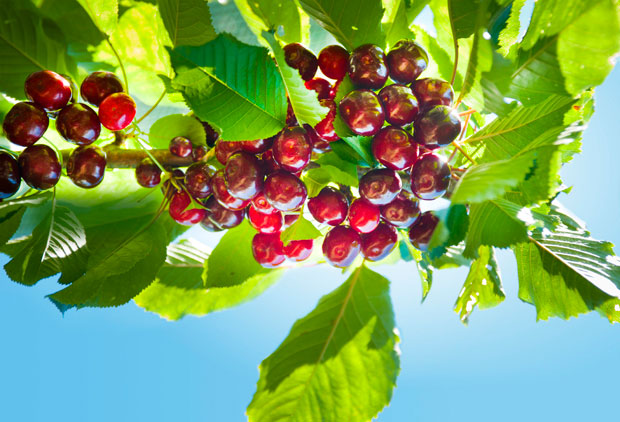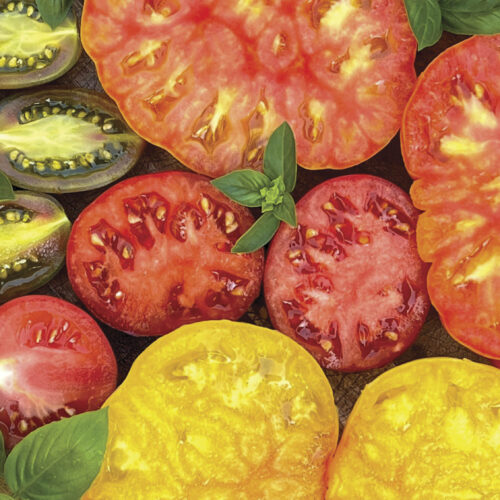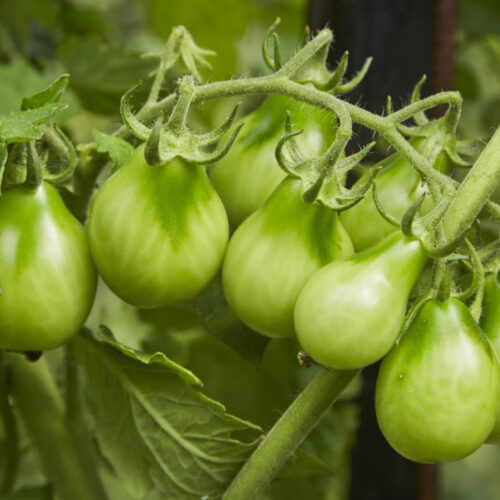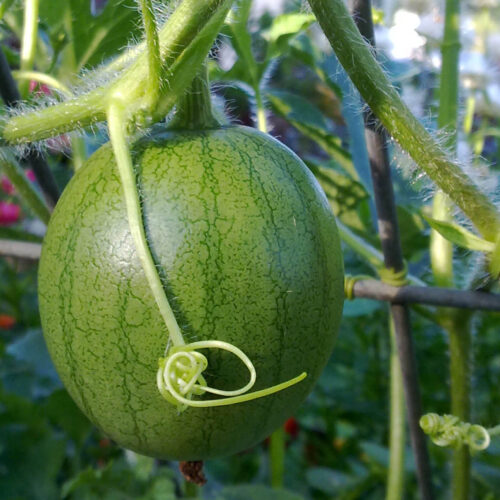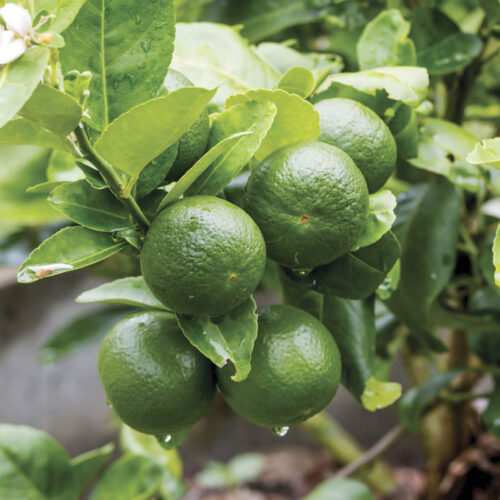Cherry Charm
2013-02-25T07:10:01+11:00
Cherries can be tricky to grow, but the rewards are high and with new low-chill and dwarf varieties, more gardeners are giving them a go, writes PENNY WOODWARD.
Many gardeners are put off the idea of growing cherries because of their size – with trees grown from pips sometimes reaching 10m in height – and their demand for specific growing conditions, especially winter chill. However, there are dwarf cherries and a few cultivars that need lower chill, as well as pruning methods that will keep trees small.
So the good news is that cherry lovers don’t need a big garden or to live in a cold region to successfully grow them. And considering commercially grown cherries are routinely dipped into chlorine or iodine to prolong shelf life, it’s certainly worth trying to grow your own. After all, they offer delicious fruit, gorgeous spring blooms and beautiful autumn leaves.
Potted cherries are available year-round and can be planted at any time except the middle of summer. However bare-rooted trees need to be bought and planted in winter, and if you are buying from mail order suppliers it’s good to know that they sell out quickly, so it’s wise to order well in advance.
Growing requirements
Cherries are not heavy feeders but need well-drained, humus-rich soils and an open, sunny position. They do best in soils with a pH of about 6.5. Dig in plenty of compost before planting and then top-dress with compost in spring, and again after harvest. Too much fertiliser will result in lanky growth.
Cherries don’t like wet roots for long periods but do need plenty of water in summer. Water well in early spring or wait for a heavy fall of rain and then mulch with about 4cm of lucerne hay or pea straw, keeping mulch away from the trunk. This will ensure the roots don’t dry out – cherries are often the first fruit trees to succumb during long periods of drought.
Keep soil under the canopy free of weeds by mulching again in autumn, but use only about 2cm thickness at this time of year.
Rootstock and chilling
Most cherry trees are grafted onto other rootstock. Some rootstocks are resistant to bacterial canker; others produce lower-growing trees.
Winter chill is one of the biggest limiting factors for growing cherries. Cherries are generally limited to dry, warm and cold temperate regions. For warmer regions, low-chill cherry varieties can be hard to find but are becoming increasingly available. Wes Fleming from Flemings Nurseries says if you have proper seasons and regularly get winter minimum temperatures below 10°C it is worth giving cherries a go.
If you are in the subtropics and get cold winters, cherries might be worth trying, although you would need to grow an early-fruiting cultivar with resistance to splitting, or you would lose most of your crop when the rains start. In arid and semi-arid regions, cherries are possible if you can keep the water up to them, provide some shade in summer and protect them from severe frosts in early spring.
Microclimates can alter the amount of chill in a garden. If you are in a warm area, plant in the coldest part of your garden, such as an exposed slope. If you are in a cold region with late frosts, you might choose a position protected by buildings that reflect heat and provide frost protection by throwing a cover over the tree or watering at sunrise.
Pollination and pruning
Some cherries are self-fertile, while others need another cherry nearby for fertilisation. Even those that are self-fertile bear heavier crops if another cherry is close. Trees need to be compatible for pollination and need to flower at the same time. The other essential ingredient is bees. Grow flowers and herbs that attract bees into your garden in early spring, when cherries are in flower.
Fruit is produced on short spurs on two-year or older growth. There are several different ways that a cherry tree can be pruned and this usually takes place in February when growth slows. In hot regions it may be better to prune in March to avoid sunburn of exposed branches.
Trees are typically pruned using variations on the Spanish bush method. This involves pruning the tree back to 30cm above the graft after planting or in the first summer, resulting in four or six leaders the following year. The following February these are pruned back to 30cm above the previous year’s pruning point. Repeat the following season. This results in small, thin branches and lessens the vigour of growth. After three years there should be 15-20 leaders, each with numerous fruiting spurs, resulting in heavy cropping and a smaller, easily netted and harvested tree.
Pots and espaliers
Trees grafted onto dwarf rootstock can be grown in large pots, but use good potting mix with added compost and keep well watered during dry weather. Mulch and shade the pot from afternoon sun in hot weather, and prune to keep the trees small. Trees will also espalier well using a classic fan shape and can be purchased with espalier pruning already started.
Harvesting
In the last week before full ripeness, cherries not only put on nearly 30 per cent of their finished volume, but develop their sugary sweetness and flavour. Depending on the cultivar, harvesting takes place from early December to late February.
Once the fruit is starting to look ripe, pick and taste one every day. When your cherries have reached their full flavour but are still firm and glossy, pick them with the stems intact, using a gentle, upward twisting motion so that the small fruiting spurs are not damaged.
Pests and diseases
Bacterial canker (Pseudomonas syringae) is a serious problem of cherry trees in some regions. It usually enters trees through a bark injury or pruning cut and is spread by rain, generally during autumn or winter. To avoid this, don’t prune in early spring or late autumn/winter and always sterilise your pruning tools by spraying with methylated spirits after each cut.
If bacterial canker is suspected (look for irregular spots on leaves that drop out, leaving a shothole, and gumming and dark cankers on twigs and trunks) remove the affected branch well below the infection and spray the trunk and lower limbs with copper hydroxide.
Pear and cherry slug are soft-skinned larvae that will skeletonise cherry leaves. Pick off or dust with chalk, flour or powdered clay. Alternatively, spray with organic pyrethrum. Aphids too can be a problem and are best treated by squashing or with a pest oil (there are a number on the market) applied in the morning of a cool day.
Birds are perhaps the most serious pest and can destroy a whole crop, even before cherries are ripe. The solution is to net the whole tree. If you have a permanent frame over the tree, not only can you quickly and easily net it but if frost, hail or heavy rain is predicted you can throw a layer of hessian, old sheet or plastic over the frame to stop damage.
Remove this layer as soon as the threat has passed to avoid fungal problems caused by moisture in enclosed spaces.

